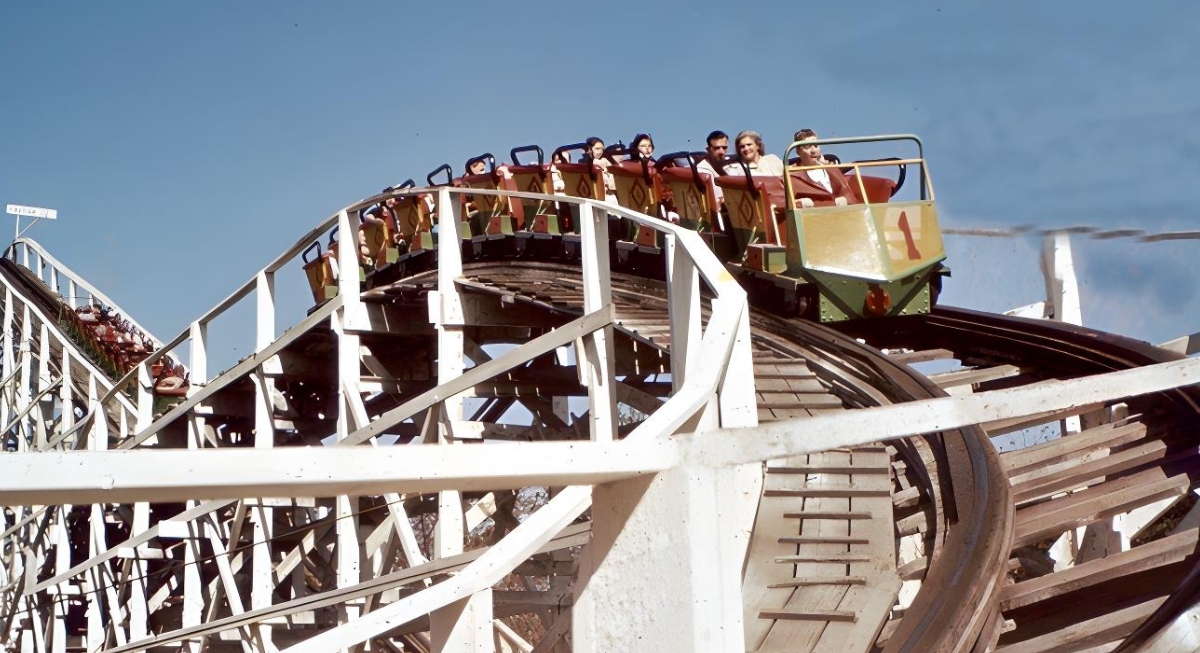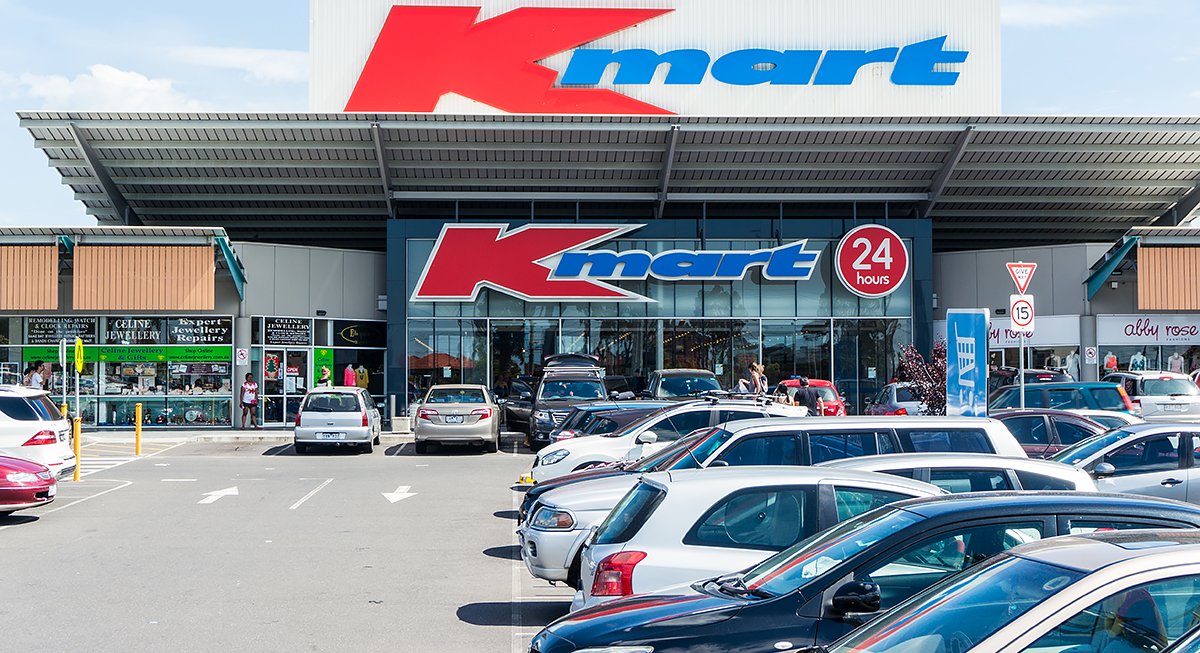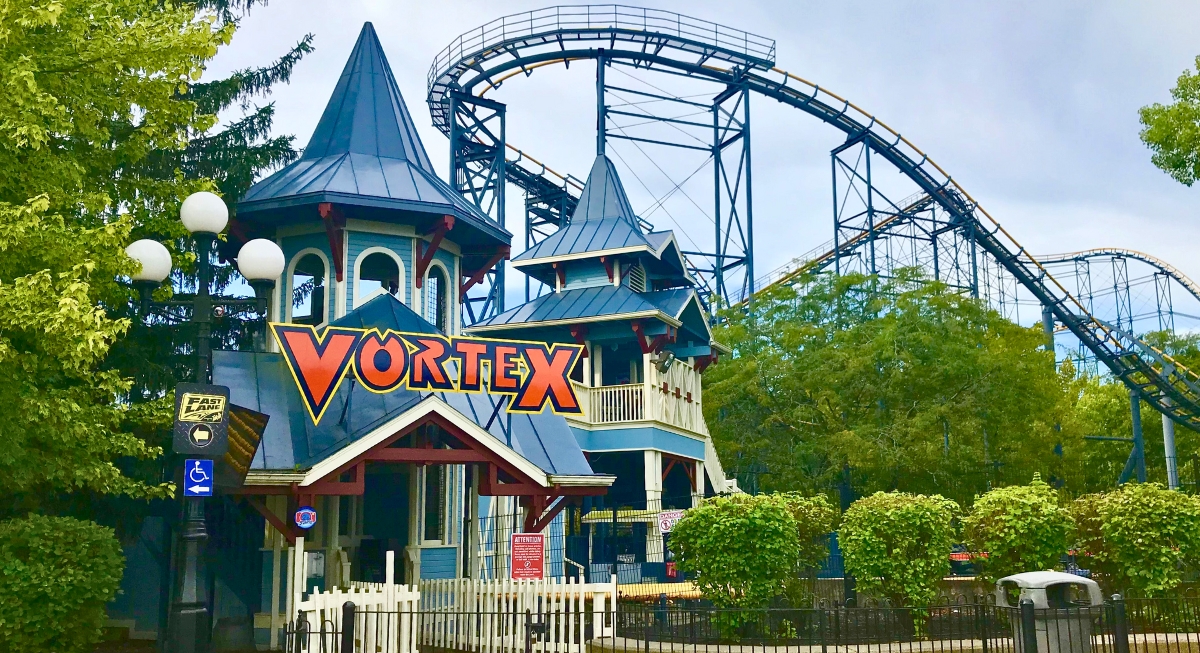Roller coasters in the 1970s were often unpolished, occasionally jarring, but rarely forgettable. They didn’t all survive, but the ones that did set a blueprint for the rides that came after.
Designers experimented with formats, layouts, and launch methods that had yet to be tested. Not all of them aged well, but here are some that we missed.
Colossus – Six Flags Magic Mountain (1978–2014)
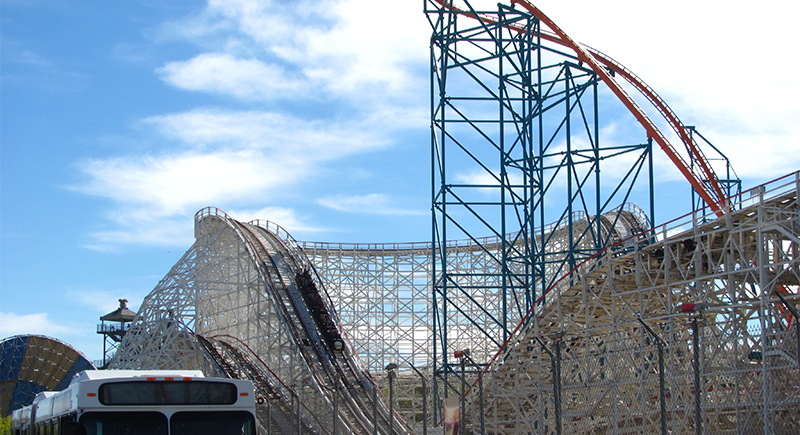
Credit: Wikimedia Commons
Riders spotted it long before they got inside the park. Colossus had white beams and towering drops and was once among the largest and fastest wooden coasters ever built. Early issues led to track adjustments and new trains, but it became a crowd staple once reliability improved. It closed after 36 years and later returned as a steel-hybrid remake.
Texas Cyclone – Six Flags AstroWorld (1976–2005)
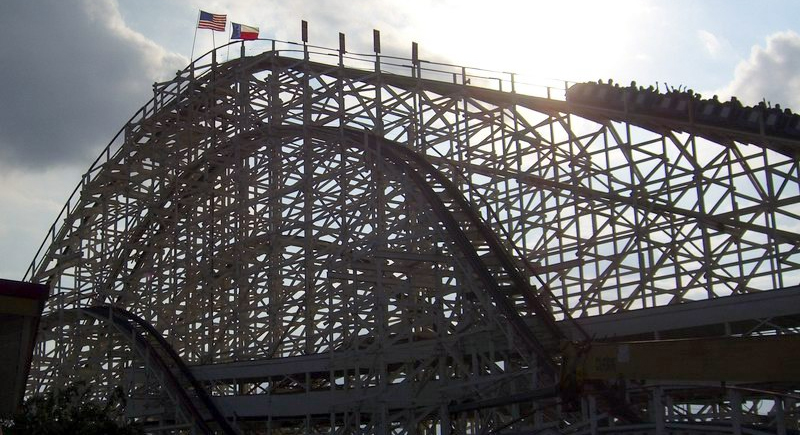
Credit: Wikimedia Commons
A direct recreation of the Coney Island Cyclone didn’t pan out, so the park brought in designer William Cobb to build a mirrored copy. The result was one of the most aggressive wooden rides of its era. Texas Cyclone delivered nonstop motion—punchy drops, calculated turns, and tight transitions.
Rolling Thunder – Six Flags Great Adventure (1979–2013)
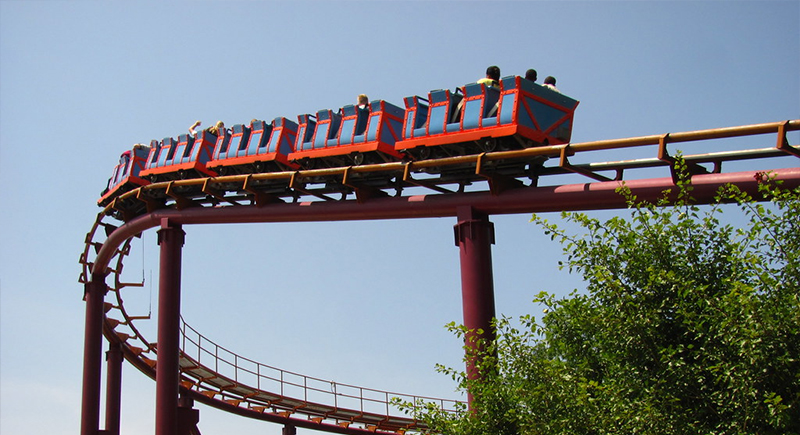
Credit: flickr
Two tracks ran side by side but weren’t quite the same. One had sharper transitions; the other felt looser. When Zumanjaro was introduced, Rolling Thunder was removed instead of being reworked. Its removal was overshadowed by newer attractions, but longtime fans still talk about it.
Thunder Road – Carowinds (1976–2015)
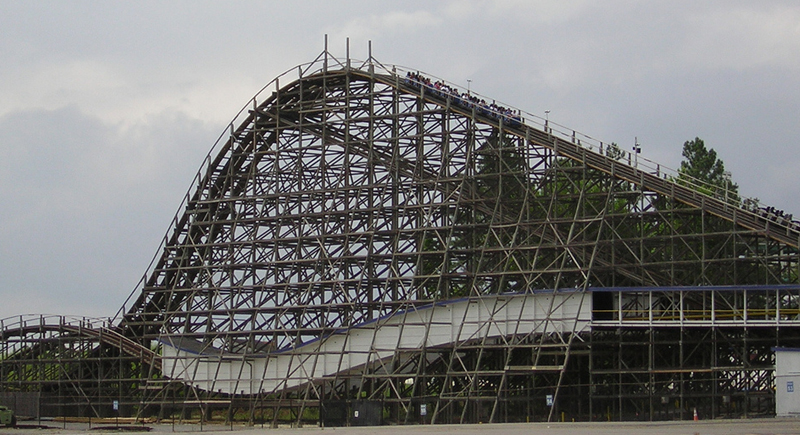
Credit: Wikimedia Commons
This coaster got its edge from crossing a state line mid-ride. Thunder Road linked North Carolina and South Carolina in one high-speed loop. It was inspired by a moonshine-era film and kept that outlaw energy through decades of operation. Its final weekend drew heavy crowds.
Big Bend – Six Flags Over Texas (1971–1979)

Credit: Youtube
Big Bend used spiral elevators to move trains uphill, and its unusual lift system immediately stood out. Its layout favored steep banking over height, and the single-file seating made the whole thing feel experimental. Downtime and low capacity eventually sealed its fate. After closure, the track was sent elsewhere for a possible rebuild that never materialized.
Double Loop – Geauga Lake (1977–2007)
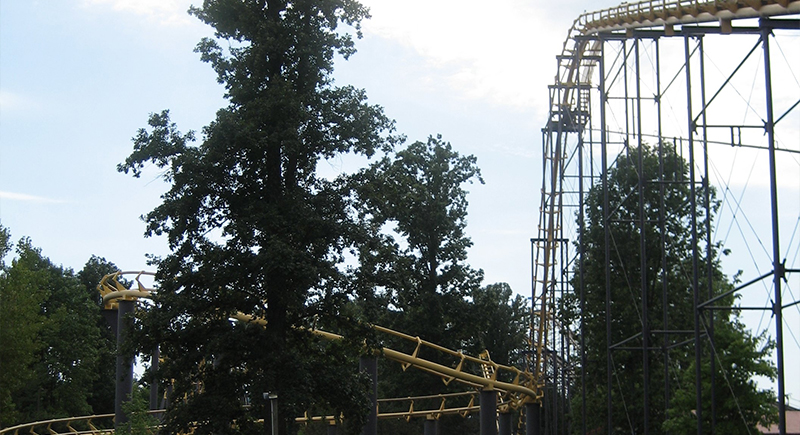
Credit: Wikimedia Commons
When Double Loop opened, its two consecutive loops were a first. Arrow Dynamics built it to break ground with back-to-back inversions, even if the rest was otherwise straightforward in layout and force. It lasted 30 years, through name changes and ownership shifts, before being sold off at auction.
Greased Lightnin’ – California’s Great America (1977–2002)
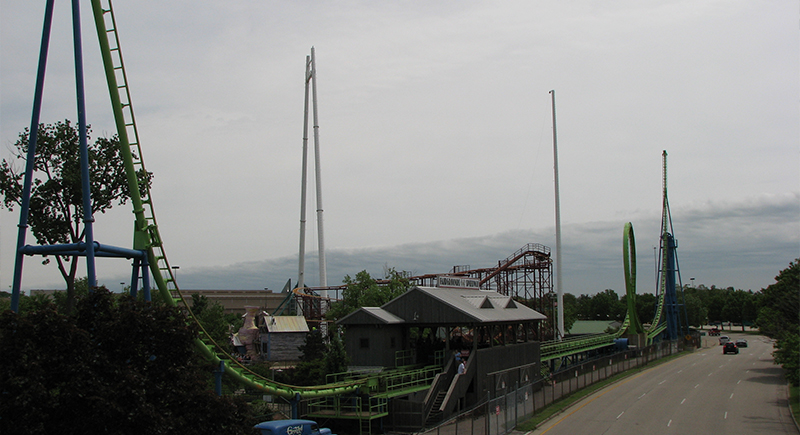
Credit: Wikimedia Commons
Launched coasters weren’t standard yet, and this one had a huge counterweight to shoot the train into a single loop and up a spike. Then it reversed, and that was the entire layout. Originally called Tidal Wave, it picked up the Greased Lightnin’ name late in its run.
Wacky Soap Box Racers – Knott’s Berry Farm (1976–1996)
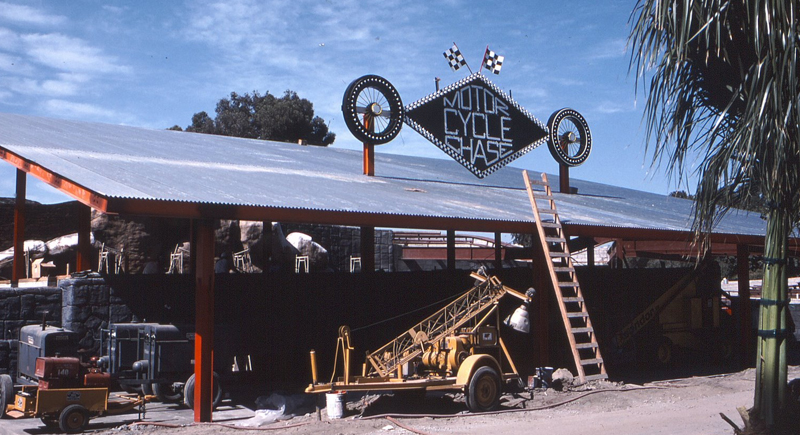
Credit: Wikimedia Commons
Riders straddled brightly styled single-rider cars and took off on slightly different tracks. The ride first opened as Motor Cycle Chase before getting a full rebrand in the ‘80s with a cartoonish theme and a new name. It wasn’t especially fast or forceful, but the layout had a rhythm that stood out in a park full of more conventional coasters.
Whizzer – California’s Great America (1976–1988)
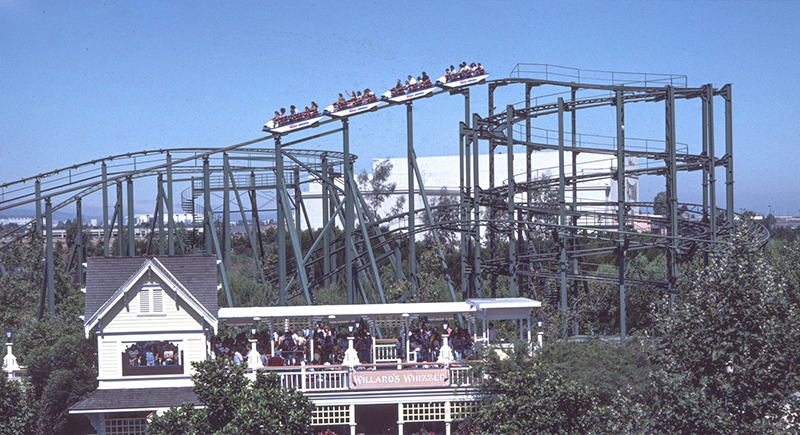
Credit: Instagram
Whizzer came with a spiral lift and flowing turns. Its pace didn’t vary much, but the layout maintained a consistent tempo that made it approachable yet engaging. When the California version closed, the near-identical Illinois ride kept running. That one’s still operating, and its continued presence says a lot about smart design.
Excalibur – Six Flags AstroWorld (1972–1998)
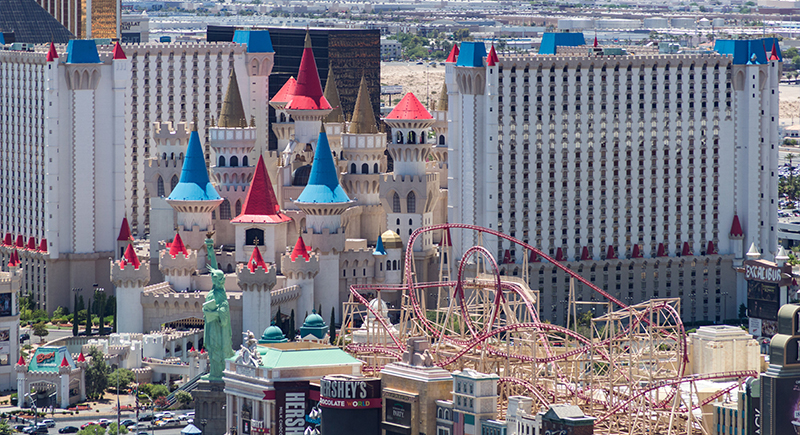
Credit: Wikimedia Commons
This wasn’t your average mine train. It was taller than most in its class and came with tighter turns and a bit more speed. Although it was originally called Dexter Frebish’s Electric Roller Ride, it was later renamed Excalibur and ran until AstroWorld shuffled its lineup.
Jumbo Jet – Cedar Point (1972–1978)
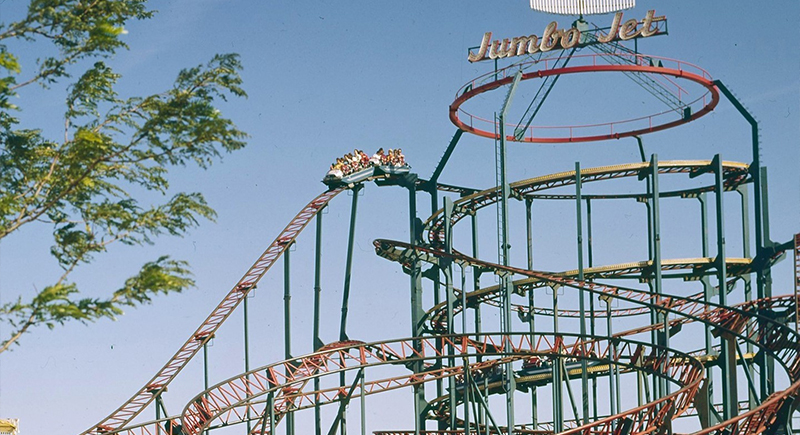
Credit: Instagram
Instead of a chain lift, this coaster operated via a spiral helix powered by wheel motors to pull trains to the top. That setup gave Jumbo Jet a distinct climbing motion that was unusual enough to draw early attention. It was the first of its kind and influenced later models of compact looping steel coasters.
Tidal Wave – Marriott’s Great America (1977–1986)
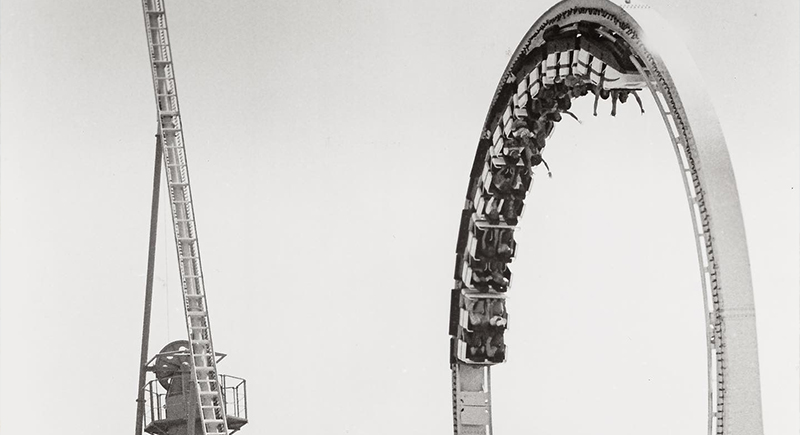
Credit: Instagram
Guests in Santa Clara got it first. This shuttle loop debuted just a year after the park opened and used a weight-drop launch system placed into a tower beneath the rear spike. The train blasted forward through a vertical loop, stalled out on the far spike, then came hurtling backward through the loop again.
Looping Star – Various Parks (1978–1980s)
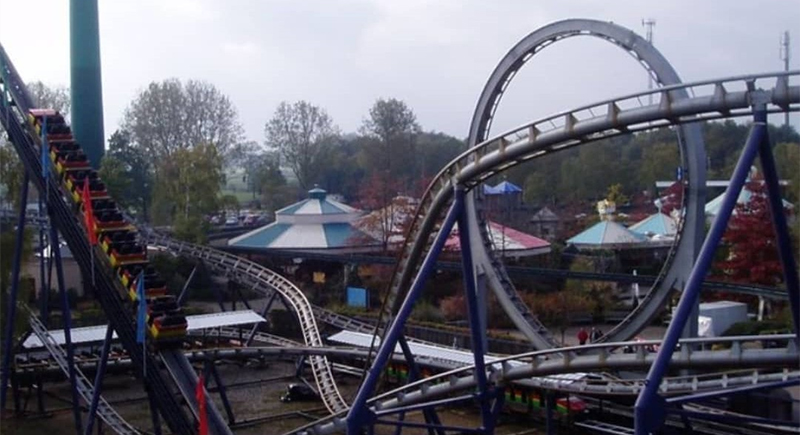
Credit: Instagram
The track of the Looping Star had a cone-plug system so that pieces slotted together without much scaffolding, which cut down build time and made it ideal for fairs. A smaller version called Silverarrow came later, but Looping Star offered a layout that became more widely recognized.
Jet Star II – Various Parks (1970–1990s)
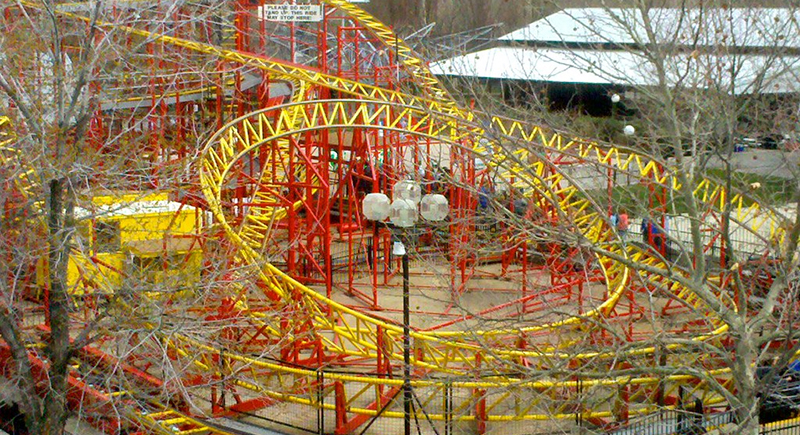
Credit: Wikimedia Commons
With six-person cars and a spiral lift powered from within the trains, this coaster made clever use of space. The track twisted across banked turns and narrow drops and packed tighter transitions than its size implied. Jet Star II appeared in both permanent parks and traveling setups, and remained in rotation for decades without major redesign.
Racing – Bakken, Denmark (1972–2022)

Credit: Wikimedia Commons
Single-file cars on this Zierer Flitzer followed a zigzag course of shallow drops and sweeping curves. It opened in 1972 and ran for fifty years, placed in a compact layout that moved well but never overreached. It cycled through riders for decades before retiring.

